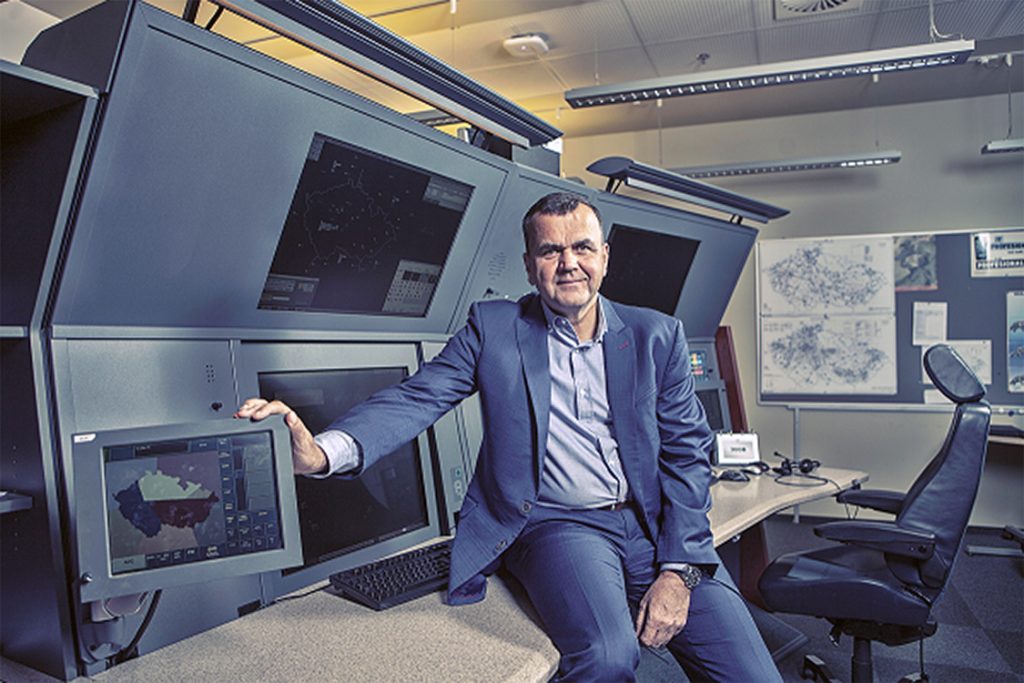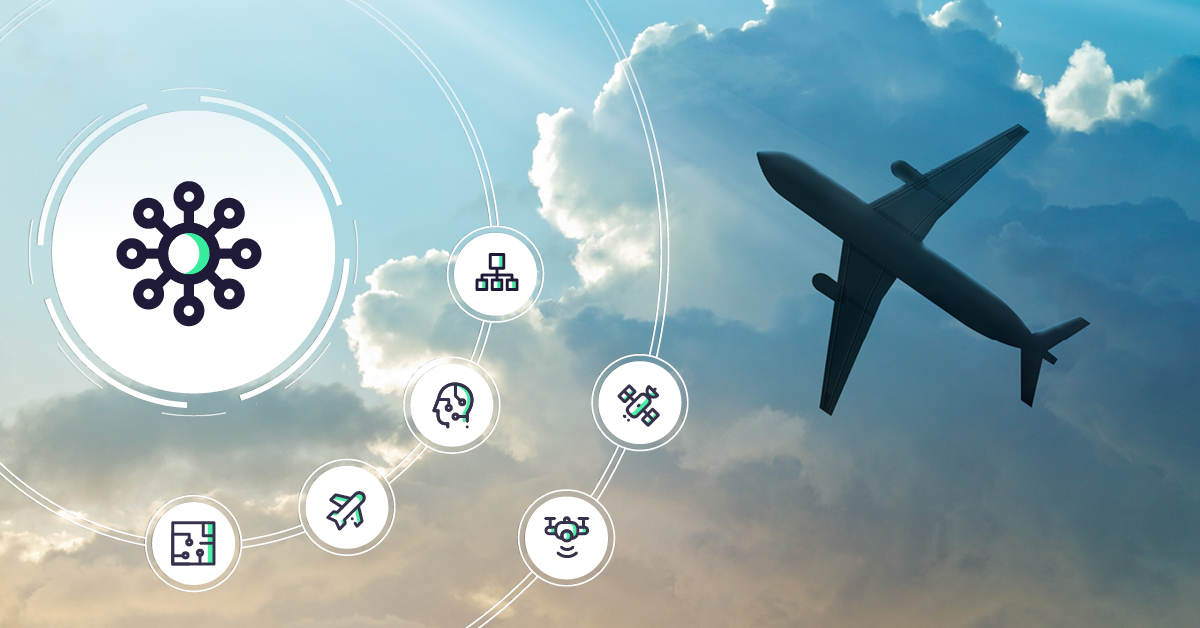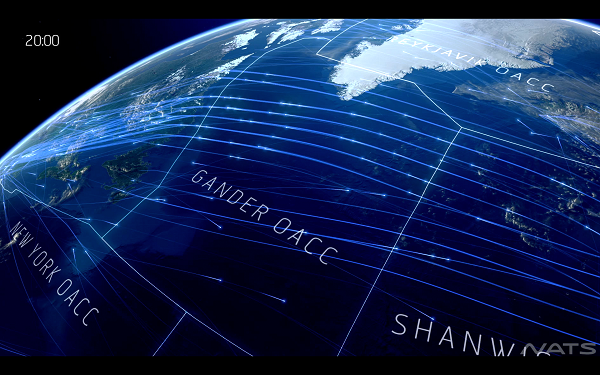Airspace Q1 2019 – Getting Europe ready for continuing traffic growth

CANSO must lead the way in ATM cooperation with partners old and new, says Jan Klas, Chair, Europe CANSO CEO Committee (EC3) and Director General, ANS of the Czech Republic.
The extraordinary, rapid rate of air traffic growth in many parts of the world has created several challenges for air navigation service providers (ANSPs), which they have met with positive, dynamic responses.
But in Europe, parts of the ATM community have been overwhelmed by the unforeseen surge in demand for air travel. During 2018, and in particular the summer season, certain of Europe’s airspace capacity requirements were stretched to their limits.
EUROCONTROL statistics send out a clear message. Air traffic in Europe has increased almost 4% year-on-year and on 7 September 2018 the number of aircraft flying through European airspace reached a daily peak of 37,701 movements.
Given these demands and the continuing excellent safety performance of the European ATM system, it is important to acknowledge the high level of professionalism demonstrated by Europe’s air traffic controllers.
But that is one of the few positives to take from 2018. The average en-route delay during the summer season was 2.03 minutes per flight, which represents a twofold increase compared with the previous year. Delays due to air navigation service capacity issues worsened a remarkable 67%. It is an unpalatable fact that these delays have increased threefold because insufficient numbers of air traffic controllers were available and there were several instances of industrial action.
I am sure our Members see this situation as an opportunity for some creative thinking. We all understand we cannot solve this challenge by merely continuing to introduce short-term capacity-enhancing measures. These measures must be accompanied by a fundamental discussion on systemic changes.
This debate is already intense and there is a great opportunity for CANSO to take an active role in shaping the discussions. The debate is made even more pertinent by initiatives such as the European Airspace Architecture Study, which is looking at the long-term design of European airspace; and the Wise Persons Group, which is exploring the future direction of ATM in Europe.
We have demonstrated that we have the knowledge to ensure a high level of operational safety but we must also be able to define and communicate institutional and business models that appropriately support fundamental systemic changes – such as flying without borders across Europe and flexible responses to demand.
Positive examples
CANSO must be active in jointly enforcing its vision with other stakeholders, especially airspace users as the customers. We have to leave behind the language of the past, the statements that were inflammatory and not always justified. Instead, we need to promote a modern ATM model successfully inspired by positive examples from similar industries.
This can be the only approach that will work at political and regulatory levels (both European and national) and the only way we can extricate ourselves from the process of continually being at the mercy of reactive and opposing lobbying pressures, which are contradictory in both goals and means.
The result of these pressures has been an increasingly rigid regulatory system without positive and natural motivations to improve pan-European system behaviour, regardless of the stage of the economic cycle.
This contribution focuses on my view of the future of CANSO. Although we perceive CANSO to be a single organisation, it comprises several very different regions. But my focus will be on the specifics of the region I represent, which means Europe, as well as the issues connecting our industry worldwide.
Operation versus capacity
Air traffic is our raison d’être. Forecasts for world air traffic in the coming years suggest it is unlikely that growth rates will fall. According to ICAO forecasts, almost double-digit growth can be expected in the Asian region and an increase of around 5% will be typical for the United States, Africa and Australia.
Forecasts for Europe also show growth. The forecasts of EUROCONTROL/STATFOR show annual growth rates of 2.1% to 3.7% for European Civil Aviation Conference (ECAC) countries over the next few years. The experience of recent years has shown that it is prudent to consider even higher estimates.
However, this is not the only specific feature of our region. It is evident that the European ATM system has reached a point that economists call a ‘production possibility frontier’. A further increase in system capacity is not possible without substantial investment and major changes within the organisation of the European ATM network. For CANSO Europe, this is one of our top priorities.
Important changes
An important issue to consider is the institutional position of ANSPs. In principle, an ANSP is a monopoly provider in its segment of airspace – at least for the time being – and in the vast majority of cases is an enterprise owned by the State. As such, we are subject to economic regulation, which has many forms. So far, this regulation is common to all CANSO members.
The distinction of the European region lies in the large quantity and complex logic of regulatory measures, which are currently undergoing major changes. My colleagues and I will strive to find a common voice while these measures are being developed. We will then view the regulations in terms of customer demand for the quality and price of our services with all the consequences this implies.
The efforts we have made to meet our vision for the future became apparent in 2018. We have had our successes. An example which can perhaps be an inspiration for colleagues from other regions of the world is the close coordination and communication we have achieved between CANSO and the Network Manager. These cooperative measures recently succeeded, under the 4 ACC (air control centres – NATS, DFS, DSNA and MUAC) initiative, to significantly reduce overall delays in the busiest parts of European airspace.
Sharing goals was also behind a major extension of the free route airspace (FRA) programme in Maastricht Upper Airspace Centre’s area of responsibility, one of Europe’s most complex airspaces. This achievement significantly extended the family of airspaces, where the FRA environment is already in operation.
With regard to the most pressing problems of the current ATM system, virtually all CANSO Europe Members have continued to intensively train new air traffic controllers and, within their capabilities, to nullify the causes of industrial actions and reduce their impact to a minimum.
Another key positive outcome, and the result of cooperation, is the coordinated preparations for the 2019 season, which started promptly following the end of the 2018 summer season. Proposed solutions adopted so far suggest that, despite the expected increase in traffic, the quality and capacity of planned ATM services will meet the expectations of our customers.
In addition to other operational measures that will increase benefits to our customers based on the 4 ACC concept will be a better use of meteorological information and its accurate and flexible integration into operational management systems.
Common ground
Returning to CANSO’s strategy as a global organisation, I believe that CANSO will be able to strengthen further those elements that each Member has in common. Air traffic management is developing globally in the same direction and the differences between regions are attributed to the pace at which this development is taking place.
We must be able to recognise future changes within our industry in the horizon of 2050. These will be more than just trends towards further liberalisation and the removal of national borders in airspace. Regional differences will not be a major obstacle to a changing ATM environment in which, sooner or later, new players will enter our business.
We cannot expect from them any consideration or the collegiate cohesion to which we are now accustomed. Global technology e-giants have great ambitions in aviation, and advances in artificial intelligence and unmanned air systems show they are on the right track. North America, Europe and Asia will be the primary targets of these financially strong and technologically advanced players, but their global influence will be evident across all other continents. If these technological and operational concepts are to be applied, it is essential that CANSO is their active participant from the very beginning.
Only CANSO and its members can expedite these fundamental changes, build on what has been achieved so far and implement the necessary changes within the context of both regional and global cooperation.


